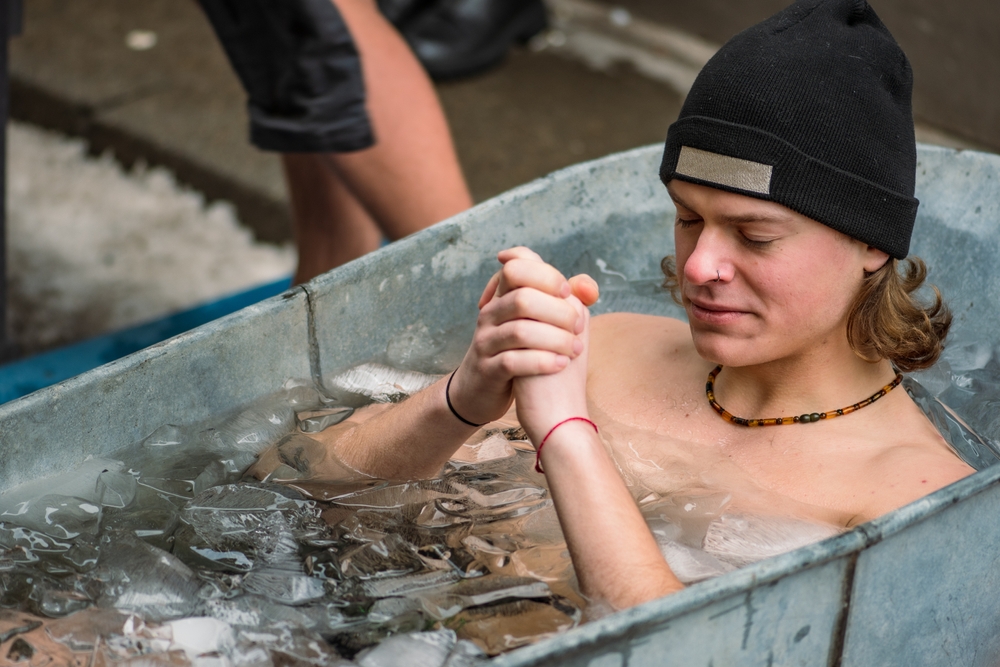Understanding Cold Plunge and How It Works
A cold plunge is when people enter cool water for a short time, often in a pool or tub. This practice has been around for centuries in many cultures. In this article, you will learn what a cold plunge is, how people prepare for it, and the different ways it is used in daily life. It explains the steps in simple terms, making it easy to understand how this tradition has become part of modern routines.

What Are Cold Plunge Benefits for Your Body
Cold plunge benefits extend across multiple body systems and functions. When you immerse yourself in cold water, your body immediately begins conserving heat by redirecting blood flow from your extremities to vital organs. This process can help reduce inflammation throughout your body, potentially alleviating chronic pain and swelling. Many practitioners report improved mood and mental clarity, likely due to the release of endorphins and norepinephrine during cold exposure. Additionally, regular cold water immersion may strengthen your immune system by increasing white blood cell production and improving circulation patterns that support overall health.
How Cold Water Immersion Affects Your Metabolism
Cold water immersion activates brown adipose tissue, a special type of fat that burns calories to generate heat. When exposed to cold temperatures, your body works harder to maintain its core temperature, temporarily increasing your metabolic rate. This process, called thermogenesis, can continue for several hours after your cold plunge session ends. Research suggests that regular cold exposure may improve insulin sensitivity and glucose metabolism, potentially supporting healthy weight management. Your body also increases production of certain hormones, including norepinephrine, which can enhance fat burning and improve mental focus throughout the day.
Muscle Recovery Cold Plunge Techniques and Timing
Muscle recovery cold plunge sessions typically last between 2-15 minutes, depending on water temperature and individual tolerance levels. Athletes often use cold water immersion within 24 hours after intense training or competition to reduce muscle soreness and speed recovery. The cold temperature helps constrict blood vessels, reducing swelling and limiting the inflammatory response that can cause delayed onset muscle soreness. When you exit the cold water, blood vessels dilate, creating a pumping effect that helps flush metabolic waste products from muscle tissues. Many athletes incorporate contrast therapy, alternating between cold and warm water, to maximize recovery benefits.
Cold Plunge Therapy Methods and Equipment Options
Cold plunge therapy can be practiced using various methods and equipment setups. Traditional options include natural bodies of water like lakes, rivers, or ocean waters during cooler months. Purpose-built cold plunge tubs, ranging from simple ice baths to sophisticated temperature-controlled units, offer more consistent and convenient experiences. Some practitioners use chest freezers converted into cold plunge tubs, while others invest in specialized wellness equipment with built-in filtration and temperature control systems. Cryotherapy chambers provide an alternative dry-cold experience, though they work differently than water immersion. Ice baths remain one of the most accessible methods, requiring only a standard bathtub, cold water, and ice.
Essential Cold Plunge Guide for Beginners
Your cold plunge guide should begin with gradual exposure and proper safety precautions. Start with shorter durations of 30 seconds to 2 minutes in water temperatures around 60-65°F (15-18°C), gradually working toward longer sessions and colder temperatures as your tolerance improves. Always have someone nearby during your first few sessions, and never attempt cold plunge therapy if you have certain medical conditions like heart disease or uncontrolled high blood pressure. Focus on controlled breathing techniques to manage the initial shock response, taking slow, deep breaths rather than hyperventilating. Exit the water immediately if you experience excessive shivering, numbness, or difficulty thinking clearly. Warm up gradually afterward using dry clothes and gentle movement rather than hot showers or heating pads.
Safety Considerations and Medical Precautions
Cold plunge therapy carries certain risks that require careful consideration and preparation. People with cardiovascular conditions, respiratory issues, or pregnancy should consult healthcare professionals before beginning cold water immersion practices. The initial cold shock response can cause rapid heart rate increases and blood pressure spikes, which may be dangerous for some individuals. Never practice cold plunge therapy alone, especially in natural water bodies where currents, depth, or water quality may present additional hazards. Hypothermia remains a serious risk with prolonged exposure or excessively cold temperatures. Watch for warning signs including uncontrollable shivering, confusion, slurred speech, or loss of coordination, and exit the water immediately if these symptoms occur.
Cold plunge therapy represents a growing area of wellness practice with promising research supporting various health benefits. While many people experience positive effects from regular cold water immersion, individual responses vary significantly based on factors like age, health status, and exposure protocols. The key to successful cold plunge practice lies in gradual progression, proper safety measures, and listening to your body’s responses. As research continues to examine the mechanisms and long-term effects of cold exposure therapy, this ancient practice continues finding new applications in modern health and wellness approaches.
Medical Disclaimer:
This article is for informational purposes only and should not be considered medical advice. Please consult a qualified healthcare professional for personalized guidance and treatment.




